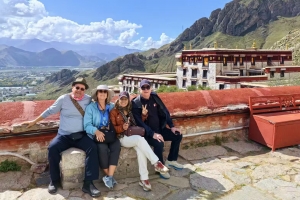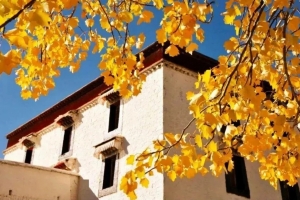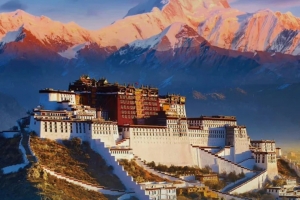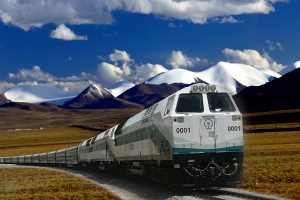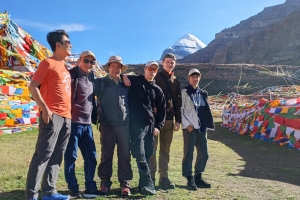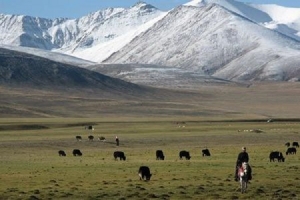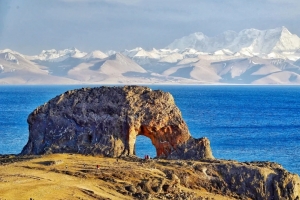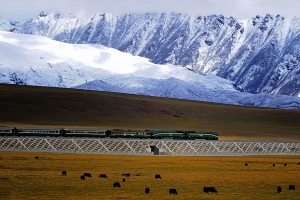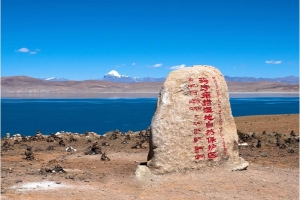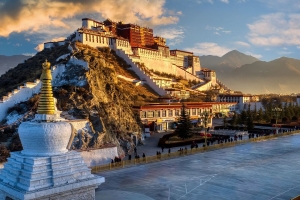Stretching across Central and South Asia, the Tibetan Plateau (often called the Qinghai-Tibet Plateau) is the planet’s largest and highest plateau. To many travelers it is synonymous with dramatic, high-altitude landscapes – expansive highlands, soaring mountain ranges, turquoise lakes, remnants of ancient cultures, and a unique way of life adapted to thin air and intense sunlight. For international visitors, the plateau is both alluring and humbling: a place that rewards careful preparation with some of the most unforgettable scenery and cultural encounters on Earth.
The plateau’s immense size and high elevation make it a major force in Earth’s climate and hydrology. Its average elevation is famously high – a figure often quoted as around 4,500 meters (14,800 feet), and its total area stretches across millions of square kilometers.
Why the Tibetan Plateau Matters
The Tibetan Plateau is sometimes called the “Roof of the World” and the “Third Pole” because of its enormous stores of ice and snow that feed Asia’s great rivers. It acts like a giant heat engine that strongly influences monsoon patterns and climate across Asia. The uplifted plateau and its surrounding mountains shape wind patterns, rainfall distribution, and river systems that hundreds of millions of people depend upon. Recent scientific attention has focused on glacial retreat and permafrost changes across the plateau, which are significant for regional water security and ecosystems.
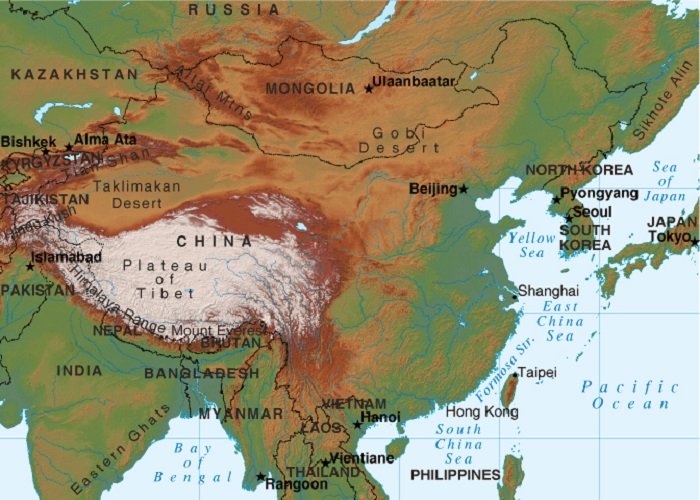
Map of Tibetan Plateau
The Six Geographical Regions of Tibetan Plateau
To plan an effective trip and understand what to expect, it helps to think of the plateau in six broad regions. Each has its own character, elevation range, and travel experience.
Northern Tibetan Plateau
The core highland north of the Tanggula and Gangdise ranges is a broad, relatively flat region dotted with salt lakes and wide pastures. This is the classic “high steppe” landscape — vast, wind-swept, and sparsely populated.
Southern Tibetan Valley
Also called the southern mountainous region, this area follows the upper reaches of major rivers such as the Yarlung Tsangpo (Brahmaputra upstream). Deep valleys below towering ranges create surprisingly green corridors and important cultural centers.
Qaidam Basin
A high inland basin to the northwest with arid plains, salt lakes and unique desert landscapes. Expect stark colors and a sense of remoteness.
Qilian Mountains
A chain of fault-block mountains to the northeast with high passes, glaciers, and alpine valleys — a lesser-known but beautiful area for travelers who like quiet mountain drives.
Qinghai Plateau
To the northeast, this upland area includes the large, shallow Qinghai Lake and many pastoral communities. It is a good region for combining culture with wide open vistas.
Sichuan-Tibet Alpine Canyon Region
The southeastern rim of the plateau is characterized by extremely deep river gorges and dramatic altitude drops — places like the upper Yangtze and Lancang (Mekong) rivers carve spectacular canyons here.
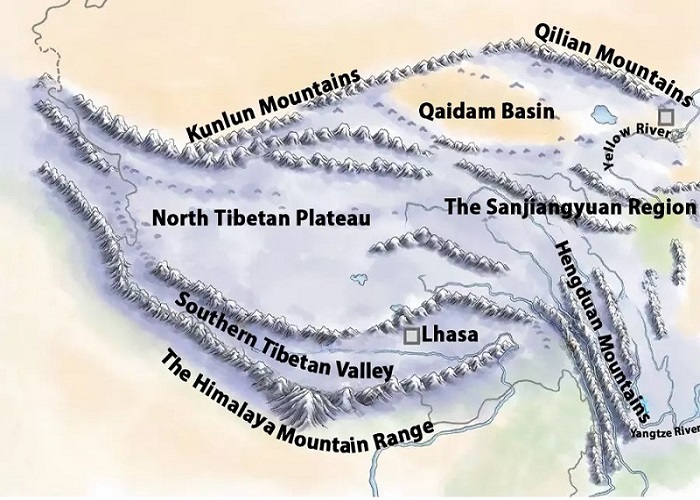
The Six Geographical Regions of Tibetan Plateau
Landforms That Define the Tibetan Plateau
The Tibetan Plateau’s landforms are astonishingly varied for such a high region. Expect to find:
- Extremely High Mountains: The Himalayan front and other ranges produce peaks like Mount Everest, the world’s highest, which rises on the border of Nepal and Tibet.
- Glaciers: Tens of thousands of glaciers exist across the plateau’s mountains; together they form a vital freshwater reservoir. Scientific observations show the region’s glaciers are retreating, with important implications for downstream water supplies.
- Rivers and Headwaters: Many of Asia’s great rivers begin here — the Yangtze, Yellow, Mekong, Brahmaputra, Indus and others — so the plateau is rightly called Asia’s water tower.
- Lakes: Both freshwater and saline lakes dot the landscape. From satellite views the lakes present a mosaic of blues and greens; some, such as Namtso, sit at very high elevations and are considered sacred. Namtso sits at around 4,718 meters above sea level.
Tibetan Plateau’s Climate
The plateau climate is shaped by elevation more than latitude.
- Strong solar radiation and abundant sunshine. The thin atmosphere allows intense sun exposure — sunblock and eye protection are essential.
- Cold temperatures and large diurnal ranges. Days can be mild and sunny, while nights drop sharply. Even in summer, nighttime temperatures can be near freezing at high elevations.
- Low oxygen and altitude effects. Many areas are above 3,500–4,000 meters, so altitude adaptation and health awareness are crucial (see Health & Altitude Tips below).
- Local variations. The southeastern margin is wetter and greener thanks to mountain rainfall; the interior is dry and more arid, often depending on glacial meltwater for rivers.
Culture, History and the Spirit of the Plateau
The Tibetan Plateau is as rich culturally as it is geographically. Traditional beliefs such as Bon and Tibetan Buddhism have shaped ritual life, art, architecture, and landscape perception. Sacred peaks (like Mount Kailash), holy lakes (like Namtso), monasteries, prayer flags, and mani walls are everyday elements of the cultural landscape.
Historically, the plateau encompassed kingdoms and cultures like Zhangzhung, which contributed astronomical knowledge, medicine, and temple architecture. Today, monasteries, festivals and local handicrafts remain entry points for respectful cultural exchange. Travelers should approach temples and sacred sites with humility, follow local customs, and ask before photographing people or ceremonies.
Practical Tibetan Plateau Travel Advice for International Visitors
Health & Altitude Tips
- Acclimatize slowly. Plan at least 1–2 days in a lower-elevation gateway city (such as Lhasa, depending on itinerary) before ascending further.
- Know the symptoms of altitude sickness. Headache, nausea, dizziness, and fatigue are common early signs. Descend and seek medical attention if you experience serious symptoms such as shortness of breath, confusion, or inability to walk.
- Hydrate and rest. Drink water regularly, avoid heavy alcohol, and keep physical exertion moderate in the first 48 hours at altitude.
- Consider medication. Some travelers use acetazolamide (Diamox) to ease acclimatization — consult your doctor before travel.
- Carry a basic medical kit. Include oxygen canisters for emergencies if you’ll be in very remote areas, and know where the nearest clinic or hospital is along your route.
Packing Essentials
- Sunscreen (high SPF), sunglasses (UV protection) and a wide-brim hat
- Warm layers (fleece, down jacket), windproof shell, gloves and thermal base layers
- Comfortable walking shoes or lightweight hiking boots, plus warmer boots for high passes
- Reusable water bottle and water purification tablets (in some places water treatment is helpful)
- Personal medication, altitude medication if prescribed, and a small first-aid kit
- Lightweight sleeping bag liner for budget guesthouses or nomadic camps
Permits, Entry and Logistics
Permit requirements and entry rules can change; research current logistics for the region and routes you plan to take. Many international visitors travel with local tour operators who assist with local permits, transport, accommodations, and navigation in remote areas. It’s common to arrange flights, train segments, and internal permits ahead of time to avoid surprises.
Responsible and Respectful Travel
- Respect sacred sites and local customs. Observe signs, remove hats inside shrines if appropriate, and avoid walking directly in front of people when they perform circumambulation (kora).
- Minimize environmental impact. Carry out litter, avoid burning plastic, and minimize single-use plastics where possible.
- Support local economies. Buy handicrafts and eat at community guesthouses when you can — this helps preserve traditions and fosters positive exchanges.
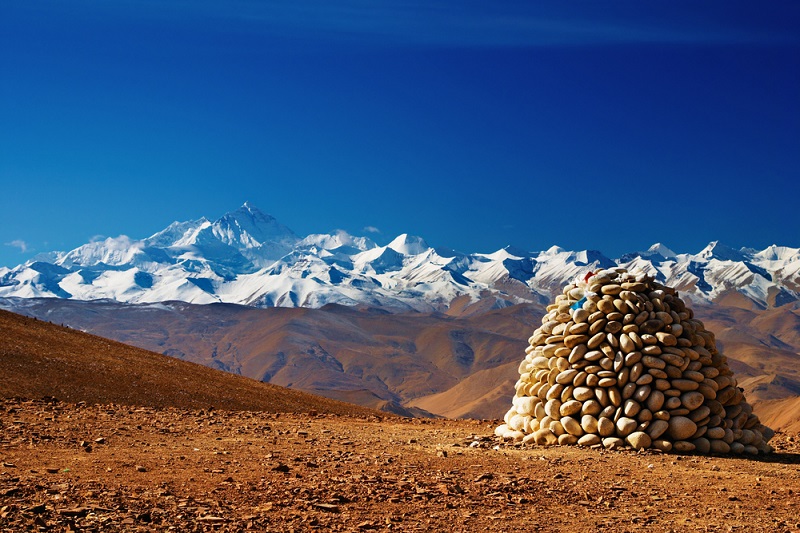
Must-See Places on the Tibetan Plateau
Below are iconic places that showcase the plateau’s diversity and cultural depth.
Lhasa and the Potala Area
Lhasa remains the cultural heart for many visitors. The Potala Palace, Jokhang Temple, and Barkhor Street provide an introduction to Tibetan urban religious life and architecture.
Lake Namtso
A vast, shimmering lake high in the Tanggula range, Namtso is famed for its beauty and spiritual significance; it sits at approximately 4,718 meters elevation.
Mount Everest Viewing and Tingri Area
For many travelers, seeing Everest is a lifelong dream. The Tibetan side offers dramatic north-face views and a different perspective than Nepal.
Qinghai Lake
A sweeping inland lake and pastoral landscapes that offer birdwatching, cycling, and a peaceful alternative to more crowded circuits.
Mount Kailash and Mansarovar
A sacred pilgrimage site for several religions; many travelers do the kora (circumambulation) around Kailash for both spiritual and trekking experience.
The Silk Road and Qaidam Basin
Explore salt lakes, desert-steppe transitions, and ancient trade routes that whisper of long histories.
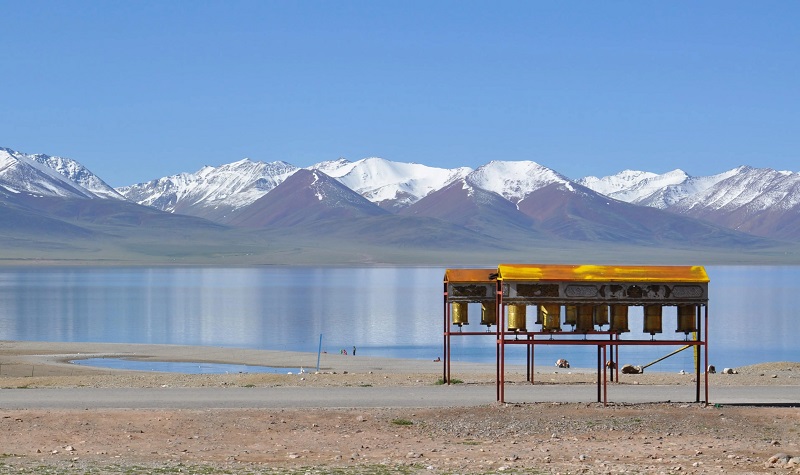
Best Time To Visit Tibetan Plateau
- Spring (April–May): Warming temperatures and emerging flowers; shoulder season for many areas.
- Summer (June–August): Rainy season on the plateau’s southeastern margins but generally the warmest time; many passes are open. Expect occasional afternoon storms.
- Autumn (September–October): Clear skies and cool nights — often the best time for photography.
- Winter (November–March): Very cold and many routes are closed by snow; excellent for solitude but high logistical difficulty.
Frequently Asked Questions about Tibetan Plateau
Will I get sick from the altitude?
Many travelers experience mild symptoms. Acclimatize, ascend slowly, and follow medical advice. Severe altitude illness is rare if you take precautions and descend when necessary.
Do I need a tour operator?
In many parts of the plateau, local permits, remote logistics, and language barriers mean traveling with a reputable, licensed operator makes travel smoother and safer. Operators also help with respectful cultural encounters.
Can I travel independently?
Some parts (cities, shorter routes) are easy independently; remote high-plateau circuits typically require guides and permits.
What about food and water?
Staple foods include barley porridge (tsampa), yak milk tea and meat stews; vegetarian options are available but sometimes limited in very remote spots. Carry safe drinking water and use purification methods if needed.
Why Visit the Tibetan Plateau?
The Tibetan Plateau is one of the last places where the feel of altitude, remoteness, and cultural depth combine to create intense travel experiences. It is a place to slow down, breathe carefully, and listen — to wind through prayer flags, to bells in remote monasteries, and to the vast silence of high lakes and steppe. For travelers who prepare well, travel respectfully, and keep safety top of mind, the plateau offers transformative landscapes and memories that stay with you long after you return to lower ground.
If you’d like a tailored plan, including recommended routes, permit assistance and on-the-ground support designed for international travelers, Journey2tibet specializes in authentic, sustainable journeys across the Tibetan Plateau. We can help you choose the right season, handle local logistics, and design itineraries that balance acclimatization with unforgettable experiences. Contact Journey2tibet to start crafting your trip to the Roof of the World.

